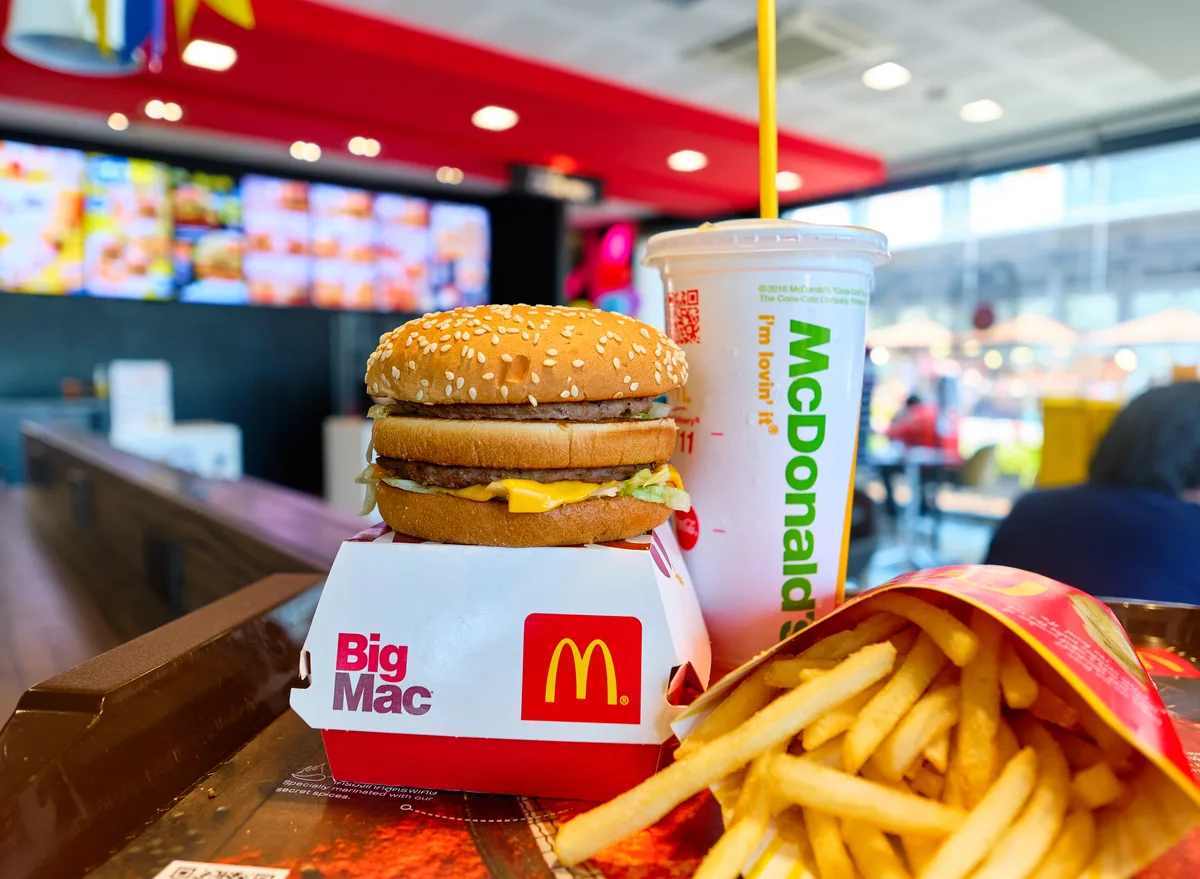Table of Contents Show
In the years since McDonald’s was founded in 1940, it has become one of the most popular fast-food chains in the world. McDonald’s transformation from a humble fast-food chain to a cultural phenomenon has attracted a fair share of criticism and controversy.
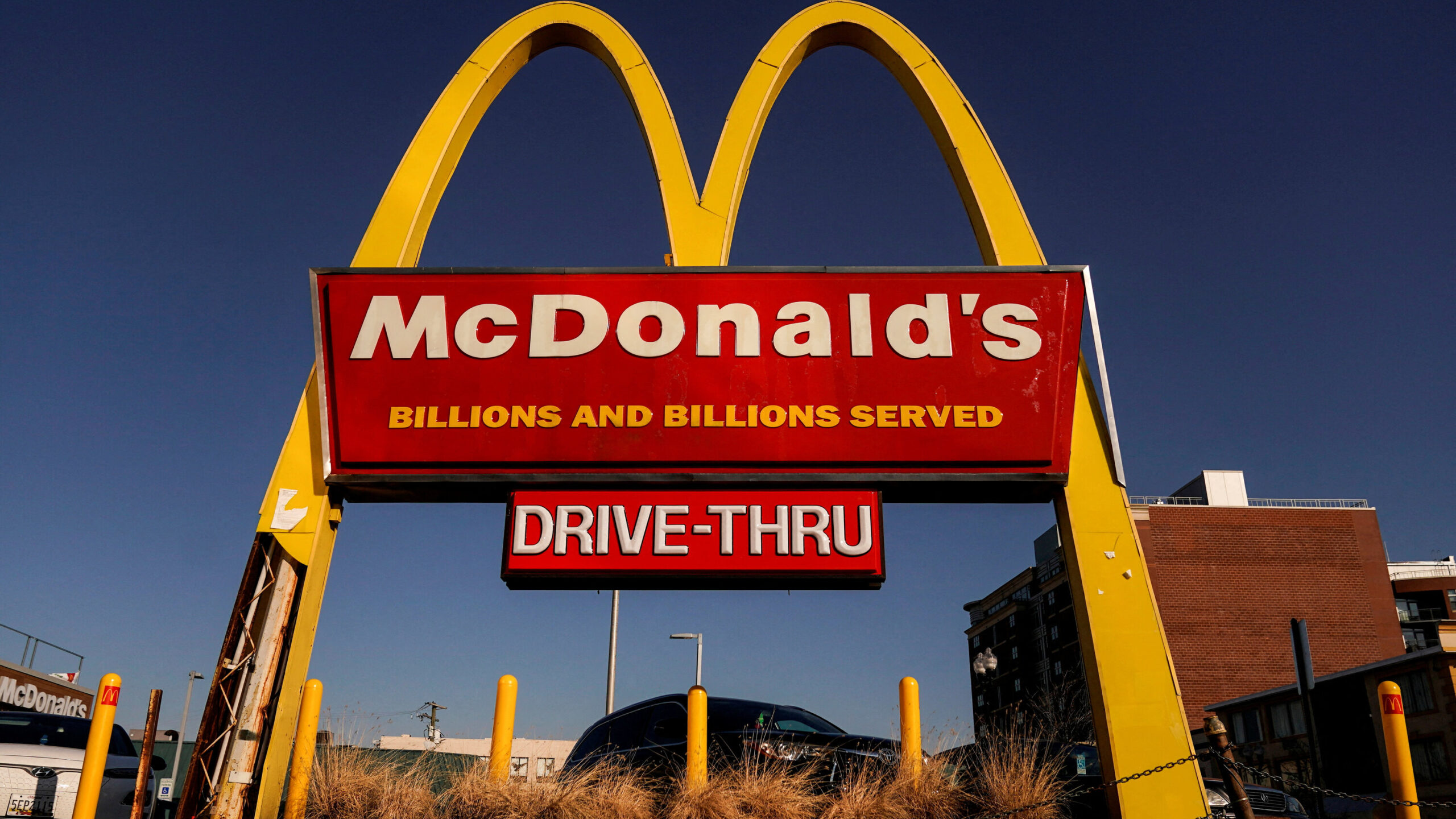
Despite the fact that McDonald’s is mostly well-loved, many argue that it has become unhealthy and less nutritious over time; even so, the company continues to thrive and appeal to citizens in many ways besides burgers and fries.
The Founding Of McDonald’s (1940-)
The first McDonald’s was opened in 1940 by brothers Maurice “Mac” and Richard McDonald in San Bernardino, California. It started as a restaurant where customers walk up and order through a window but they renovated it later into a true fast-food restaurant; their menu got smaller, their prices got cheaper, and the quantities of food they made increased and got to the customer at a much quicker pace. (( Britannica. “McDonald’s | History & Facts.” Encyclopædia Britannica, 3 Aug. 2022. ))
The system they developed for their famously fast production of food was called the “Speedee Service System” which took cues from Henry Ford’s assembly-line production of automobiles. To ensure speedy service, McDonald’s employed a team of 12 crew members, each with a specific task. However, if customers wanted to customize their order by altering an item that was normally served ‘as is,’ they would have to wait. (( Klein, Christopher. “How McDonald’s Beat Its Early Competition and Became an Icon of Fast Food.” HISTORY, 7 Aug. 2019. ))
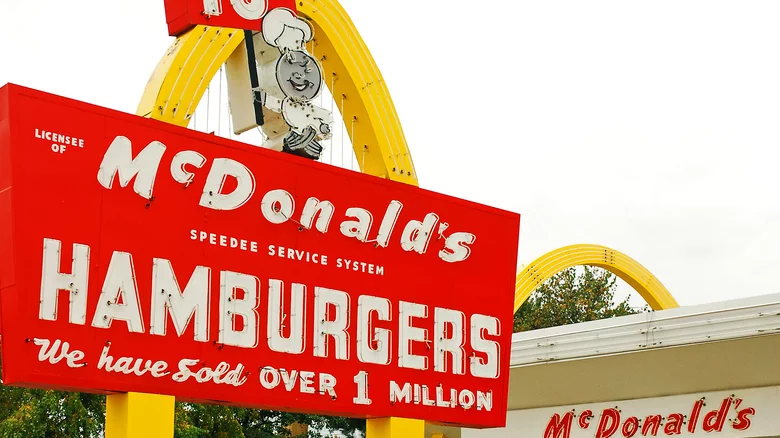
Despite the success, the brothers decided to sell McDonald’s in 1961 because they were not looking to “dominate the world.” (( Stice, Joel. “The Tragic Real-Life Story of the McDonald Brothers.” Mashed.com, Mashed, 15 Mar. 2019. )) Still, the brothers created the most significant fast-food restaurants one can ever conceive and, unfortunately, Ray Kroc, who bought out McDonald’s took most of the credit and left them out of the picture almost completely. (( Stice, Joel. “The Tragic Real-Life Story of the McDonald Brothers.” Mashed.com, Mashed, 15 Mar. 2019. ))
Under Kroc’s ownership, the fast-food chain expanded into a monopoly, serving foods in locations outside of the United States, and in 2021, there were over 40 million McDonald’s around the globe. (( Statista. “Topic: McDonald’s.” Statista, 23 Nov. 2022. )) Fortunately, a few original McDonald’s are still standing and are public museums including the very first one in San Bernardino.
The Dangerous Appeal Of Fast Food
One of the most immense backlash McDonald’s faces is its appeal to both the American youth and adults and how its food plays a role in the obesity crisis. The fact that their signature arches are easily identifiable and advertisements are found almost everywhere does not help.
McDonald’s invested 1.62 billion dollars in advertising in the United States in 2020 and their ads reach children between the ages of 2-11 more than twice the amount of its competitors. (( Feloni, Richard. “Here’s How Many Fast Food Ads American Kids See Each Year.” Business Insider, Business Insider, 15 Nov. 2013. )) This comes to show how much power McDonald’s has to appeal to the public and even children who do not know any better about their health choices.
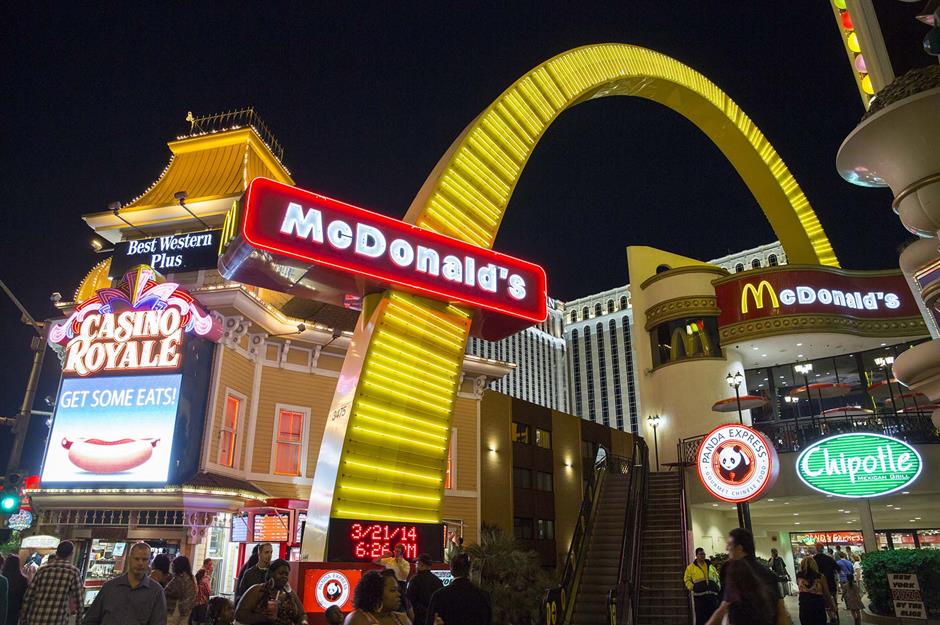
With the restaurant’s cheap prices, convenience, and satisfying salty and sweet foods, it can be said that their food is irresistible especially when it comes in contact with children; every month, approximately nine out of ten American children eat at a McDonald’s restaurant. (( “Just How Bad Is McDonald’s Fast Food?” Food Revolution Network, 10 Dec. 2012. ))
McDonald’s has and continues to receive public outcry and even lawsuits against them that were not successful, but it shows that the concern is very much at large. Numerous people turn to the internet to voice their opinion that McDonald’s is “disgusting” and that it poses a threat to children’s health by “poisoning” them.
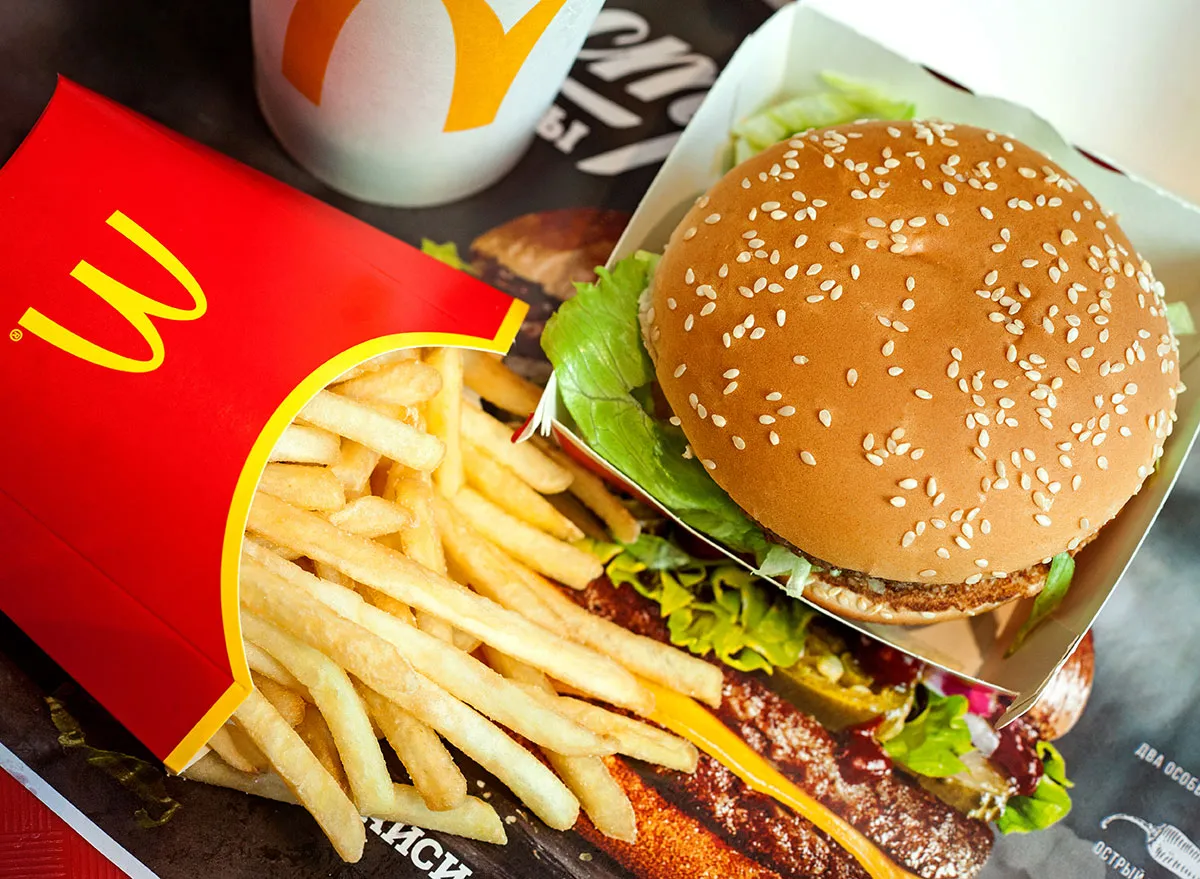
Sometimes, the opinions are stemmed off from false information such as McDonald’s using human meat in their products. For instance, a Huzlers article went viral by mentioning human meat was discovered in the freezers of an Oklahoma City factory. But, many individuals do not know the website is completely satirical and quickly shared their disgust without fact-checking. (( “Fact Check-McDonald’s “Human Meat” Claims Stem from Satire Article.” Reuters, 11 June 2021. ))
In other cases, the negative perceptions of McDonald’s stem from how the food is prepared and its ingredients, which is understandable given the concept of “fast food.” A great chunk of their foods are cooked with pre-made ingredients and contain additives. Their chicken nuggets, for example, contain starch and dextrose which make more of the nugget than the actual chicken meat. (( “What’s in Fast-Food Beef, Fish, and Chicken? It’s Not Always 100% Meat.” Healthline, 16 July 2021. ))
So, even if the meat is sometimes advertised as one hundred percent meat, there are bound to be questionable ingredients added in to make it tastier.
The Conception Of McDonald’s “Happy Meals”
There are several reasons why McDonald’s “Happy Meals” are popular with children, most notably the limited edition toy and even the box that comes with the meal, whether it is from a video game or television show. Most of the time, it relates to the current trends.
Some Happy Meals that appealed to the youth’s variety of interests were ones that collaborated with notable cartoons like Pokémon and Hello Kitty. With the franchise’s cycle of going through different types of Happy Meals, it is bound to attract all types of demographics.
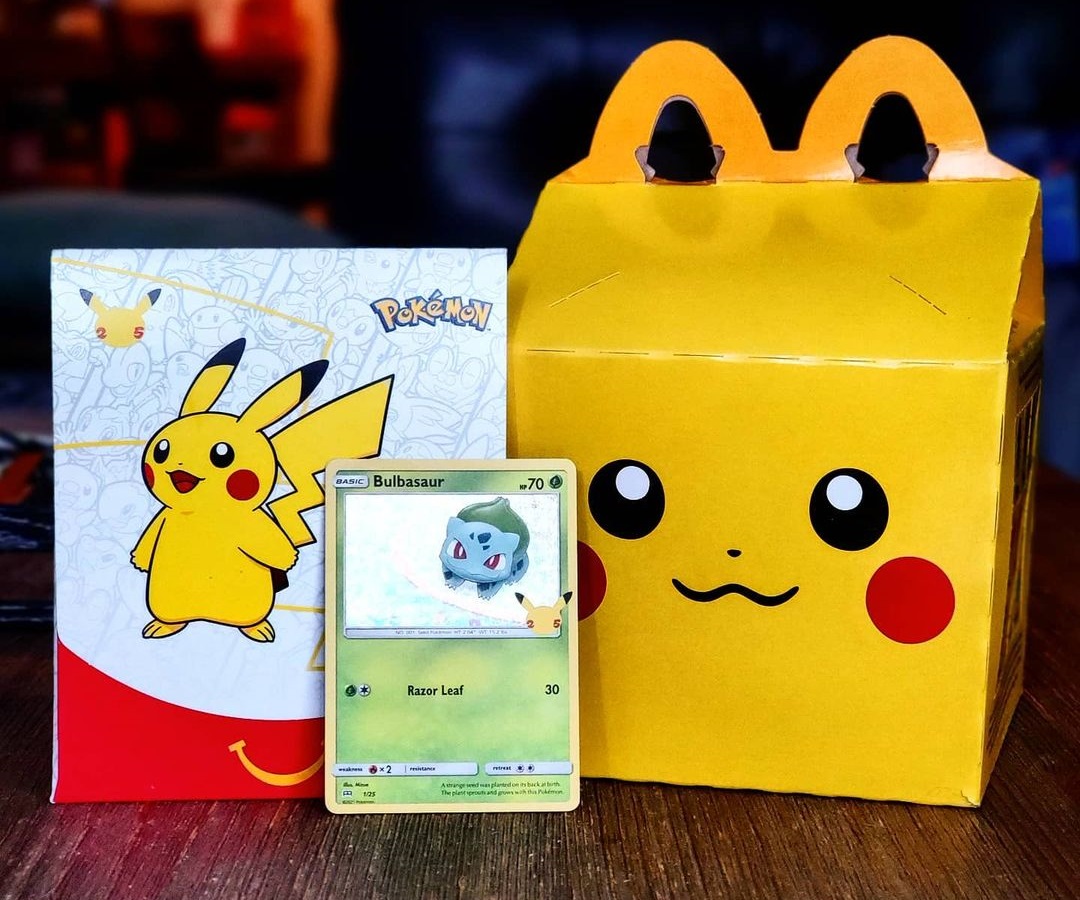
It can be said that children might not be enticed by the food, but rather by the mystery factor of what novelty they can get and how it corresponds to their favorite franchise. There are also “rare” toys that can lead children to urge their parents to come back for more chances to get them. Even so, the youth population tends to favor fast food with or without an exclusive toy because of the sugary drinks and tasty fries.
Supposedly, the name “Happy Meal” came from the idea that if children got their own meals instead of eating from their parents, everyone would be “happy.” Inspired by fun activities on cereal boxes, the Happy Meal also contains games, stories, and jokes on its packaging. (( Industrial Industries. 2021. “History of McDonald’s 1938-Today (Full Documentary).” YouTube Video. YouTube. ))
The “Happy Meal” Nostalgic Adult Craze
Even adults buy certain Happy Meals that have limited-edition collectibles that get all the hype on social media and some even sell what they got on sites such as eBay for an unreasonable price. (As an example of this trend, the chain recently introduced an “adult” Happy Meal, the “Cactus Plant Flea Market Meal Box.”)
Of course, McDonald’s intended this for adults, but there are instances where they get kid Happy Meals in attempts to get something rare for profit like a rare Pokémon card which is looked down upon because it is meant for children and sometimes they throw away the food because they just wanted the toy.
Nonetheless, adults are not excluded from its tasty appeal even though children are more likely to develop serious health issues if they are exposed to unhealthy lifestyles and eating habits early on in their lives. Adding desirable toys to the equation certainly does not help.

As evident, McDonald’s is clever enough to attract both adults and children with their Happy Meals. A particular example is on October 22 when the chain brought back the Halloween pails, arguably to lure adults in for nostalgia. But children are mostly the ones to trick-and-treat, so the general youth would be interested in the colorful novelty buckets too.
Unfortunately, adults who often go to work or college, often feel like do not have time to do basic things like eating compared to children. McDonald’s solves that with their convenience, there are locations all around the country, even in areas you might not think there is one. Plus, the food is somewhat affordable which drives customers to make it their go-to destination for either a quick bite or a full-on meal.
The Downfall Of Ronald McDonald
On the subject of happiness, have you ever wondered what happened to the mascot of McDonald’s, especially “Ronald McDonald,” who was the creepy smiling clown who wore red and yellow stripes? Despite the franchise being responsible for Ronald’s downfall, there were many external factors that contributed to it.

There are a couple of “McDonaldland” mascots that used to be the faces of McDonald’s, but Ronald had the greatest effect on children because of his silly and enthusiastic personality. He appeared in many television commercials alongside other mascots, but “survived” in the market longer than them. (( Kandell, Zachary. “Lonely Ronald: Why McDonald’s Retired Its (Creepy) Clown Mascot.” CBR, 18 Feb. 2020. ))
His popularity can be attributed to both his vibrant personality and McDonald’s effective marketing strategies. In the famed documentary Super Size Me (2004), there was a scene where a group of young students recognized who Ronald McDonald was without hesitation, but mistakingly thought Jesus was George W. Bush. Ronald McDonald’s mascot friends’ demise came with the introduction of the “I’m Loving It” campaign which targeted adults more than the youth and pushed them out of the spotlight.
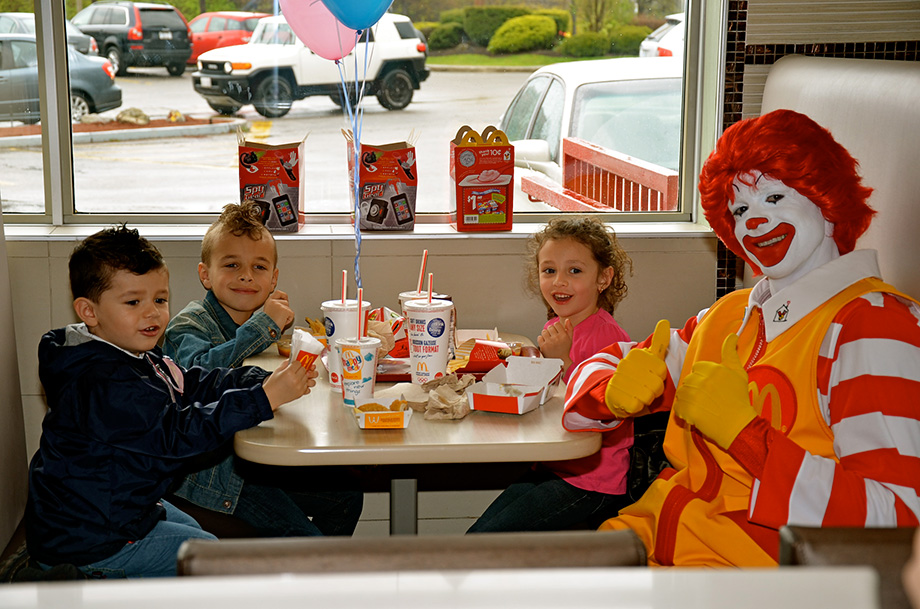
It can also be said that the chain was pressured to become more “responsible” for affecting children’s lifestyles and eating habits, well, to the public eye at least. Other factors that changed the world’s view of Ronald were the 2016 clown sighting scares and the rise of clown-themed horror aspects in films and pop culture. For instance, there was the It (2017) movie which featured a horrendous clown that preyed on children.
Additionally, Ronald was already creepy looking and has an “outdated look” to him, so that did not help either. Currently, Ronald’s most prominent role in the chain is being the namesake of Ronald McDonald House Charities. But, whether or not people hate or love him, he is still considered a McDonald’s icon and is missed by many.
McDonald’s Modern Era Of Fast Food
The end of “McDonaldland” also shifted McDonald’s restaurants to look more modern; from vibrant and fun colors including attractive to “chic” colors and basic furniture. The McDonald’s many people remembered is a sweet nostalgic memory, especially with the PlayPlace gone in many establishments today.
While some changes are good, many individuals miss when the chain was more than just somewhere to get food, it was a place that created memories and enjoyment, and it stood out from the rest.
The Nostalgia “PlayPlaces”
A major factor that diminished the availability of the PlayPlace, or their multicolored playground with tubes and slides, is the coronavirus pandemic which forced McDonald’s to shut them down. Though the pandemic is seemingly over, there seems to be only a small selection of restaurants that have the PlayPlace open.
“Brands like Chick-fil-A and McDonald’s, who have indoor play places — we’re not necessarily seeing them expanding and, in some cases, when stores are being rebuilt, they’re no longer including these play places,” said Darren Tristano, president of Technomic.
(( Lawrence, Kelsey. “Where Have All the Fast-Food Playgrounds Gone?”, Eater, 17 Apr. 2017. ))
Additionally, children might not be interested in playgrounds or going outside anymore and parents have to tell their kids to play outside an average of four times a week. (( Melore, Chris. “Most Parents Today Say Their Kids Don’t Spend Enough Time Outside Anymore.” Study Finds, 19 June 2022. )) Many children’s games are conveniently digital and within the reach of their hands, so going out to a playground might be considered “lame” to them. Or maybe it is not even the children, it could be that the parents do not feel safe having them play in such an environment due to various reasons like health or safety concerns.

At the end of the day, it feels like the adults miss the PlayPlace and care for it more than the younger generations due to the memories they had when it was prevalent and maybe even considered a staple of the restaurant. (Too bad there is not an adult-size version of the PlayPlace.)
The Fast-Food Chain’s Technological Upgrades
McDonald’s has changed not only in terms of the environment but, in addition to the modern minimalist furniture and interior, they have greatly embraced technology in terms of their food ordering system. Restaurants now have kiosks inside where customers can order food and pay for it on a large screen without the need to talk to the workers (post-pandemic).
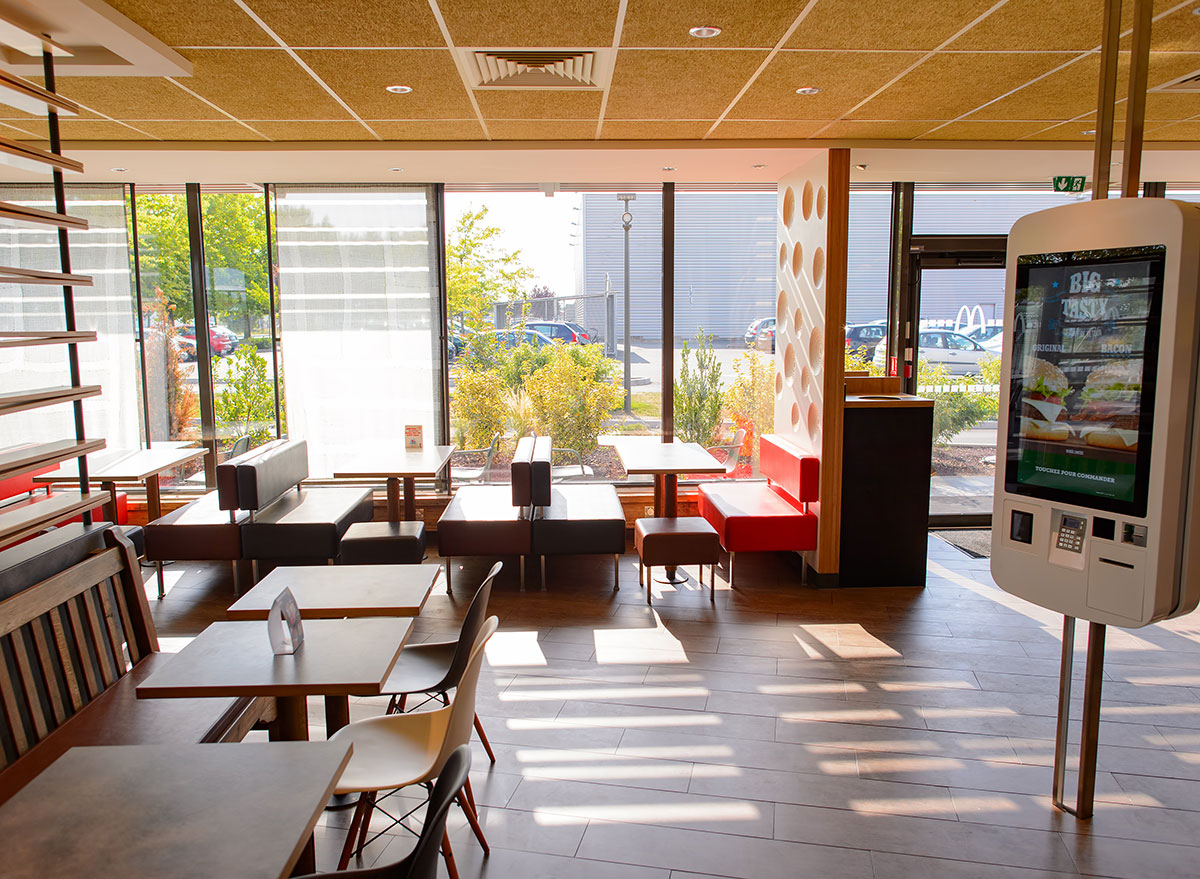
Additionally, they have multiple pick-up options; customers can go in-store, drive through, or park in a spot to get their online orders. There is also a McDonald’s app that customers can order from and also get coupons and earn points for their purchases.
Although it may be convenient and a money-saving app, it might contribute to the lines at McDonald’s being slower due to people scrolling through their phones because they are not prepared with their codes first-hand. But, it can certainly help customers transition from social distancing to the normality of face-to-face encounters.
With the rise of new technologies in the fast-food world, one can not help to wonder if it is too much, especially when people are already glued to their mobile screens enough. (( Wheelwright, Trevor. “Cell Phone Behavior Survey: Are People Addicted to Their Phones?” Reviews.org, 24 Jan. 2022. )) Plus, not everyone is tech-savvy and older citizens struggle to keep up.
McDonald’s Continuous Appeal For Relevance
Yes, the big ‘M’ and the cheap and familiar menu lure customers in every day, but the limited-edition items bring in flocks of people to McDonald’s, even though there is nothing really special about the food that comes with it.
McDonald’s, for example, is known for its limited-edition sauces, whether it is a packaging change or an entirely new concept. In 2021, the chain drew in K-Pop fans with the “BTS Meal.” It was a little more unique besides the packaging because there were two limited-edition and South Korean-inspired sauces — Chilli and Cajun. However, some American fans were disappointed that they did not get purple boxes compared to other countries. (( Nuyen, Suzanne. “K-Pop Group BTS and McDonald’s Launch Exclusive Meal and Clothing Line.” NPR, 27 May 2021. ))

Similarly, there was a collaboration with the rapper Saweetie and the Sweet N Sour sauce had a differently designed label in the meals and was called “Saweetie ‘N Sour Sauce” instead. Her meal was nothing spectacular, but it gained attention nonetheless. But some Americans take it to the next level when certain sauces are out and get them in bulk quantities which makes it unfair for those who just want to try new things.
Whether they actually love the flavors or they want to make a profit, it seems like greediness is a problem when limited-edition sauces make their grand appearance in McDonald’s restaurants. This can be seen when McDonald’s “Szechuan Sauce” which is made with soy, garlic, ginger, and a bit of vinegar, comes available in restaurants for a limited time here and there.
The mass recognization of the sauce started with the cartoon series Rick and Morty (2013– )) in which Rick traveled back in time to when McDonald’s had a special Szechuan sauce as a promotion for Disney’s Mulan (1998) movie. (( Matar, Joe; Bojalad, Alec. “Rick and Morty Szechuan Sauce Controversy Explained.” Den of Geek, 9 Nov. 2019. )) It can be said that the extreme rage for the sauce was foreshadowed in April 2017 because a 19-year-old packet of Szechuan Sauce found by a man cleaning out his car sells for $14,700 on eBay. (( Heller, Charlie. “McDonald’s Szechuan Sauce Is Finally Back.” Food & Wine. 2021. ))
In October 2017, the chain announced the Szechuan Sauce will return for just one day which was a “dream come true” for many. But, when McDonald’s barely had enough sauce to meet expectations, some harassed employers and even took it up a notch and held protests. Videos circulated around the internet with crowds of angry people chanting “We want sauce!” like their livelihood depends on it. Unfortunately, some even jumped over the restaurant’s counters and stole sauces which made the situation worst.
McDonald’s expressed concern and condemned the actions of those who stole the sauce. But it further raises the question of whether the limited edition sauces get to the hands of genuine fans or simply for those who are more motivated by greed. It is almost scary to see the influence McDonald’s has on people as a fast-food chain and how it can put people in this peculiar “trance.”

Recently, the chain made an interesting move by introducing their “Big Mac Sauce” as a dipping sauce for a limited time, considering that the sauce was previously exclusive to their Big Mac burger. The sauces come in “retro blue and silver packaging inspired by the OG Big Mac sandwich wraps,” McDonald’s said and it is free with the purchase of their chicken nuggets. (( Kirk, Alexander. “Big Mac Sauce Dipping Cups Are on the Way.” KUSA.com. 21 April 2023. ))
Our Popular Culture’s View Of McDonald’s
McDonald’s continues to thrive in numerous ways including marketing strategies, limited edition items, and pop-culture associations. With their undoubtful impact, they also encounter criticism in response to the evolving fast-food industry and customer preferences.
Despite the negativity, it seems like the chain has a place in many people’s hearts because of the nostalgia for what the franchise used to be from the dorky-looking mascots to the colorful PlayPlaces. Of course, their constant references to pop culture connect all kinds of demographic, young or old.
Ultimately, it is up to the consumer whether or not they decide to eat there though it might not seem that way from all the arches popping up on the highways and the commercials appearing on all types of screens.
